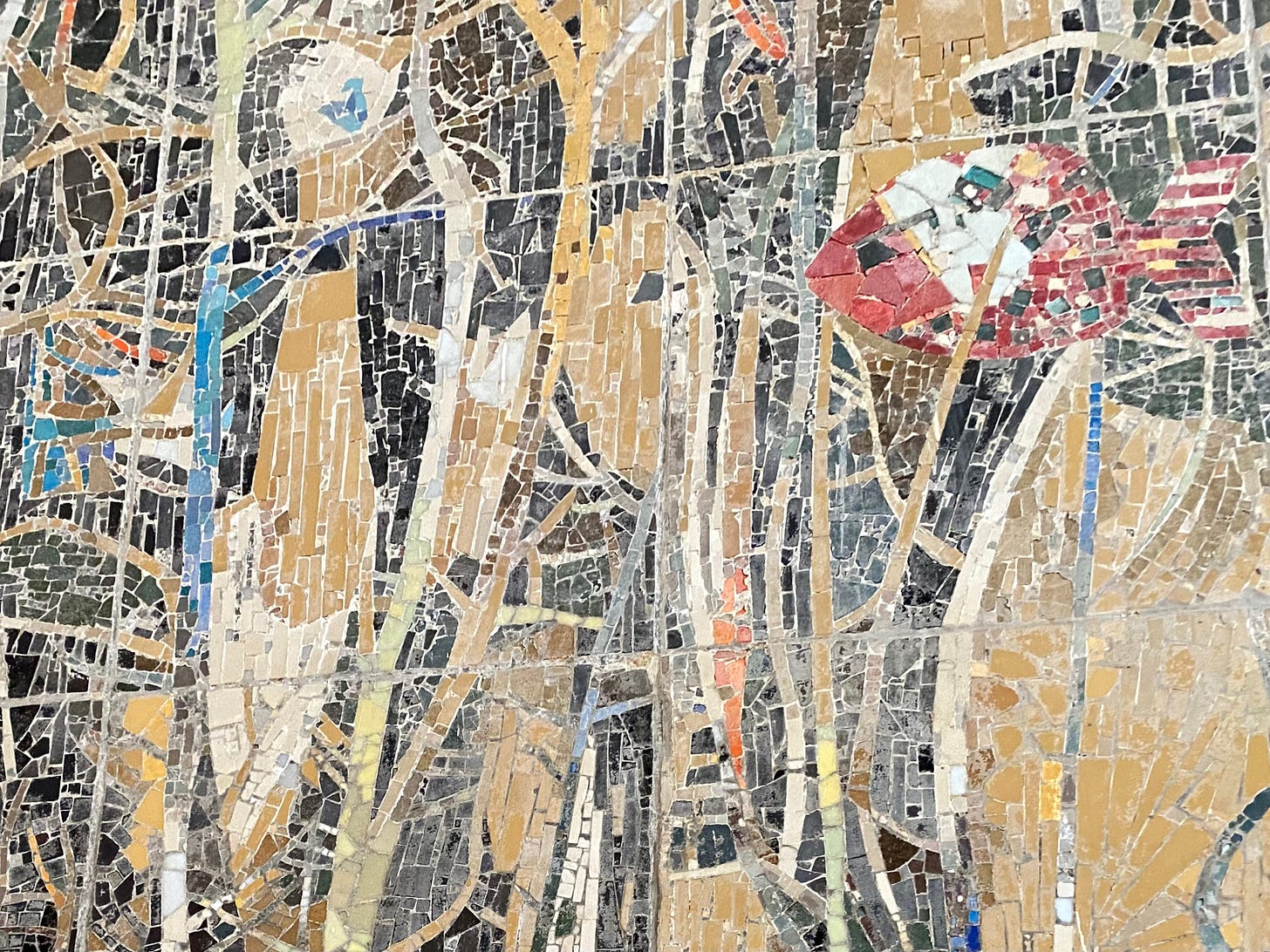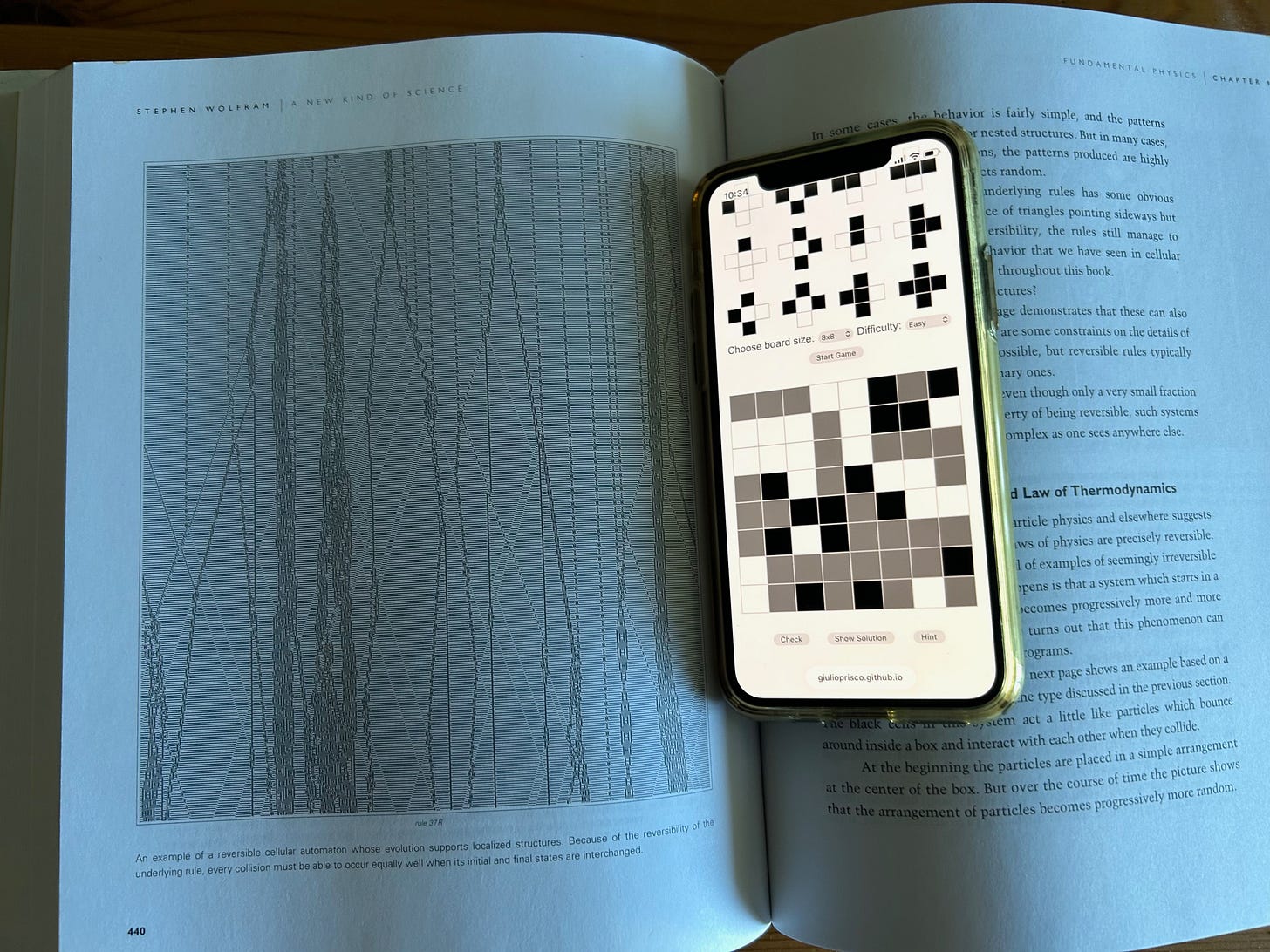Cellular automata, downward causation, and libertarian determinism (2)
Some more thoughts, and a Sudoku-like game based on cellular automata.
Greetings to all readers and subscribers, and special greetings to the paid subscribers!
Please scroll down for the main topic of this newsletter. But first:
The Terasem Colloquium on December 14, 2025, 10am to 1pm ET via Zoom, will explore recent developments in Artificial Intelligence (AI) and future prospects. The question is: Where is AI, and where is it going? Speakers: David Brin, David Orban, David Pearce, Gregory Stock, Natasha Vita-More. You are invited! Mark your calendar and stay tuned.
Some of my recent writings published in Mindplex:
Starship’s IFT-11: success amidst doubts and the race to the Moon against China
The successful Starship’s Integrated Flight Test 11 (IFT-11) comes at a critical juncture in the intensifying US-China space race to return humans to the Moon.
Another near-flawless Starship test! Yet I fear full operational readiness is still far, and NASA should consider lunar landing alternatives to beat China to the Moon. They must be listening: NASA’s acting administrator, Sean Duffy, announced plans to broaden the competition for a human landing system on the Moon.
AI-generated fun with vibe coding, math and physics
In a technical vibe coding project I’m using Grok 4 for both coding and exploring the underlying math and physics. I’m impressed with the results so far.
I was impressed by Grok’s ability to understand what I wanted from prompts that were not always as precise as I thought. And I was very impressed by Grok’s encyclopedic knowledge of relevant literature and ability to connect the dots.
Tthis is not a Turing test, because this interaction domain is far too narrow and favorable to AI. But if I were to consider this as a Turing test, I would have to conclude that Grok 4 passes it with flying colors.

This continues the discussion in “Cellular automata, downward causation, and libertarian determinism.”
I ended the previous post as:
“So this little program describes a universe where the laws of physics are deterministic and reversible, but indeterminacy allows for downward causation and libertarian determinism [Prisco 2024]. This is a cellular automata version of Emily Adlam’s Sudoku analogy outlined in [Prisco 2024]. It merges the toy models that I’ve called TM0 and TM1.”
Adlam said that the laws of nature “prescribe a unique course of history in the same way as a properly set up game of sudoku has a unique solution.”
I found Adlam’s sudoku analogy a game changer for philosophy of physics that opens a fresh perspective on many open issues. But a game of Sudoku doesn’t seem to have much to do with physics, and there’s no concept of time in Sudoku.
This cellular cellular automata version of the analogy, based on a cellular automata law that is deterministic and reversible in time just like the laws of Newton’s rational mechanics, bridges the gap.
A difference is that, if the entire first row is given (the row before the first can be taken as all zeros without loss of generality), that is, the initial conditions at time = 0 are entirely specified, then the entire history is determined. This is not the case in Sudoku. But Sudoku doesn’t have a natural concept of time, and thinking of rows as instants in time is somewhat artificial since there are no dynamic evolution laws to evolve one row into the next.
In Rule 37R there is a dynamic evolution law to evolve one row into the next. The law is deterministic and reversible, so Rule 37R provides a very simple toy model for a deterministic and reversible universe where information is conserved. The state of a cell at the next time step (row) depends on the current state of its 3-cells neighborhood and the state of the cell at the previous time step (similar to classical mechanics). With periodic boundary conditions (that is, a board that wraps upon itself like a cylinder), which is the most natural choice for a finite board, the rows will eventually repeat.
If one starts with an initial row of cells (preceded by a row of empty cells), the entire history is uniquely determined. But this is not the only way to determine it: one can also give the “initial” conditions at different times.
There’s a finite number of n-cells board histories that follow Rule 37R. This number is 2**n (the number of arbitrary initial rows of 0s and 1s). Choosing the state of a cell in a row (any row) can eliminate some of these possible histories, and one can repeat the process until only one possible history remains.
This is equivalent to the Sudoku analogy (not surprisingly, since what I have described is just a Sudoku-like game with more complicated rules), but it looks more like physics, so I keep this analogy in mind when I think about these things.
To think better with a clear example in mind I’ve written (with Grok’s assistance) code for a simple computer game called 37Rdoku.
This is a simple Sudoku-like game based on the reversible extension (37R) of Wolfram’s elementary cellular automata Rule 37. The code is in the GitHub repositories giulioprisco/ECARdoku and giulioprisco/37Rdoku, with links to a live game. First, the game fills a square board of grey cells with random black/white clues that ensure there is a unique solution. Then the player has to complete the board using Rule 37R.
To solve the game, apply Rule 37R in both the forward and backward directions. Remember that the board wraps upon itself like a cylinder (the last column comes before the first and the first comes after the last). Try and find groups of cells that can be completed, consistently with the rules, in only one way. For larger boards, finding the unique solution can be quite difficult without computer assistance. The game generates new random clues on request if the player gets stuck.
I see this little game as a very simple conceptual model for a universe that has some features in common with ours - including uncertainty. But once the unique solution (history) is given or found, then this little toy universe is fully deterministic and reversible in time. So where is the uncertainty?
If the “present” (two complete rows) is given (equivalent to the initial conditions of rational mechanics), then there’s no uncertainty and this a toy model for a deterministic universe in the sense of Laplace. But from the point of view of inner observers living in the board, the present is not fully known and I think it can’t be fully known [Chapter 5 of Prisco 2024). To determine if the true color of a grey cell is black or white, an inner observer would need information from the future, which is usually assumed to be impossible to obtain. Therefore, this simple universe is causally open.
To see this more clearly, forget your God-like perspective (you are watching the board from outside) and imagine yourself as a group of cells living in the board in a certain row (that is, at a certain time). You just can’t have all the information you would need to predict the future. The cosmic operating system is not limited by time, but you are.
In this model there still is a “true color” of all grey cells, even if some true colors are unknowable at a given time. However, I think the cosmic operating system doesn’t choose one unique history of the universe, but keeps multiple parallel histories running. That is, the cosmic operating system doesn’t make enough choices to select a unique history, but leaves multiple options open to unfold as different timelines. This is the toy model that I’ve called TM2. This toy model is causally open in a very strong sense, with multiple timelines.
[Prisco 2024] Irrational mechanics: Narrative sketch of a futurist science & a new religion.




Couldn't agree more. Your insights on Grok's capabilities for math and physics are truly fasinating. It makes me wonder about its connection to downward causation, which you mentioned. Are we seeing emergent properties here, or something more profound? Such intriguing food for thought!